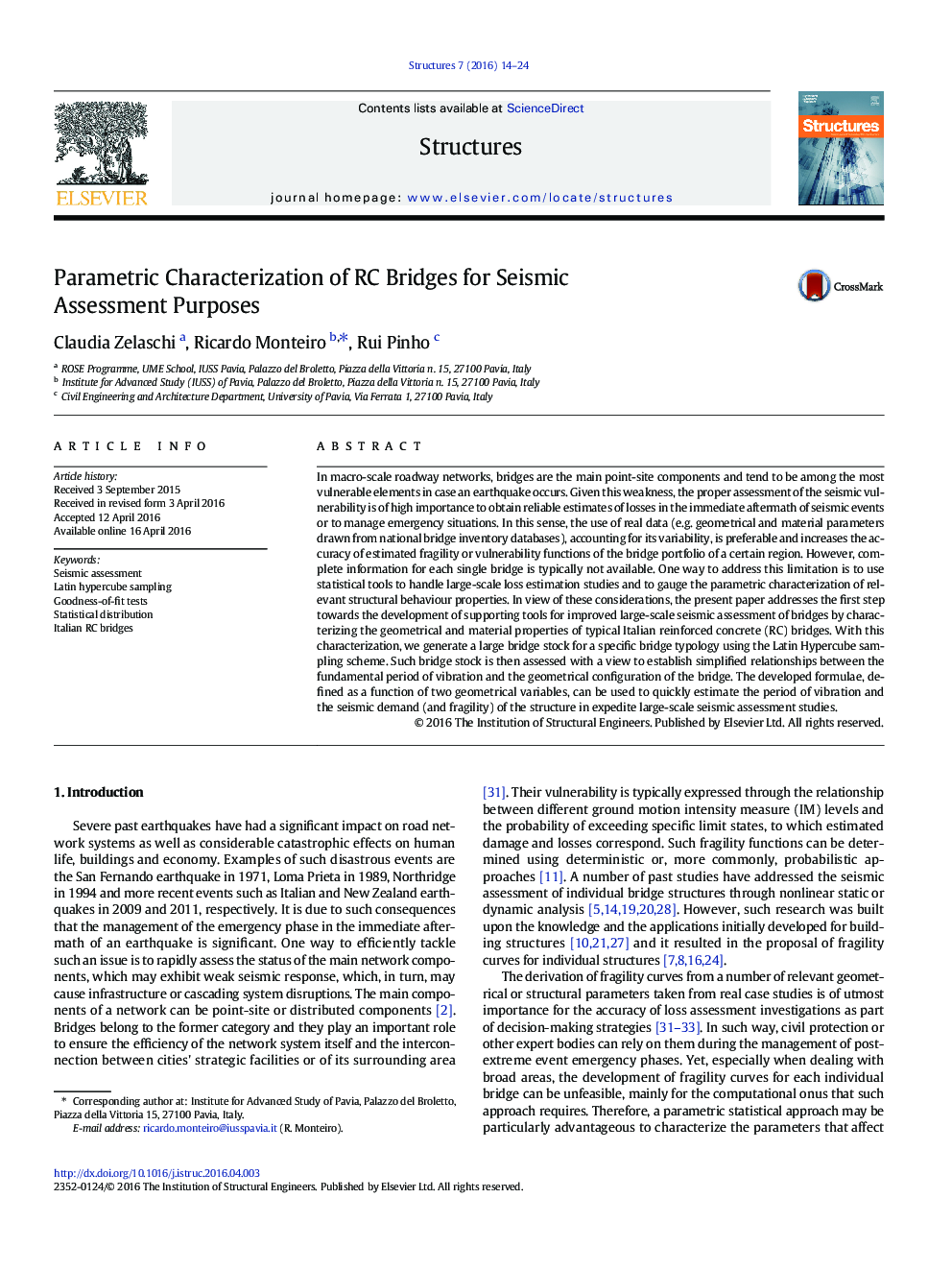| Article ID | Journal | Published Year | Pages | File Type |
|---|---|---|---|---|
| 6774639 | Structures | 2016 | 11 Pages |
Abstract
In macro-scale roadway networks, bridges are the main point-site components and tend to be among the most vulnerable elements in case an earthquake occurs. Given this weakness, the proper assessment of the seismic vulnerability is of high importance to obtain reliable estimates of losses in the immediate aftermath of seismic events or to manage emergency situations. In this sense, the use of real data (e.g. geometrical and material parameters drawn from national bridge inventory databases), accounting for its variability, is preferable and increases the accuracy of estimated fragility or vulnerability functions of the bridge portfolio of a certain region. However, complete information for each single bridge is typically not available. One way to address this limitation is to use statistical tools to handle large-scale loss estimation studies and to gauge the parametric characterization of relevant structural behaviour properties. In view of these considerations, the present paper addresses the first step towards the development of supporting tools for improved large-scale seismic assessment of bridges by characterizing the geometrical and material properties of typical Italian reinforced concrete (RC) bridges. With this characterization, we generate a large bridge stock for a specific bridge typology using the Latin Hypercube sampling scheme. Such bridge stock is then assessed with a view to establish simplified relationships between the fundamental period of vibration and the geometrical configuration of the bridge. The developed formulae, defined as a function of two geometrical variables, can be used to quickly estimate the period of vibration and the seismic demand (and fragility) of the structure in expedite large-scale seismic assessment studies.
Related Topics
Physical Sciences and Engineering
Engineering
Civil and Structural Engineering
Authors
Claudia Zelaschi, Ricardo Monteiro, Rui Pinho,
